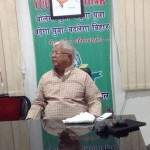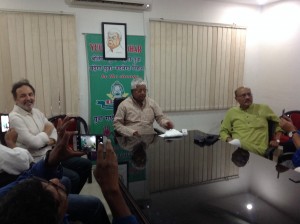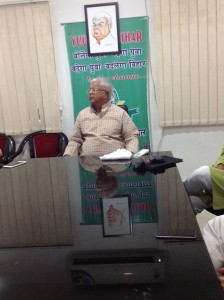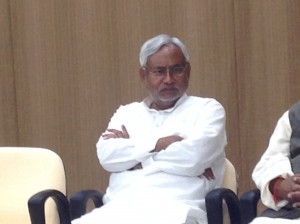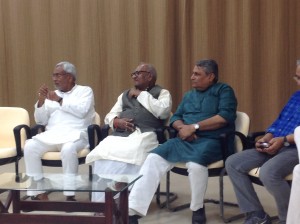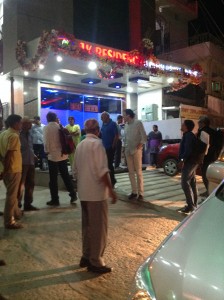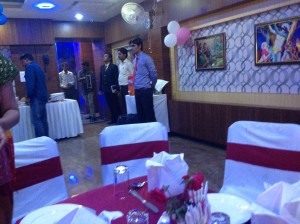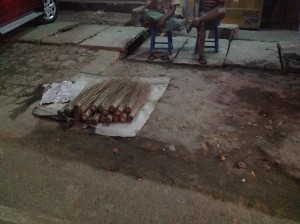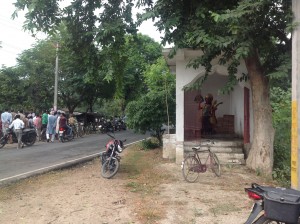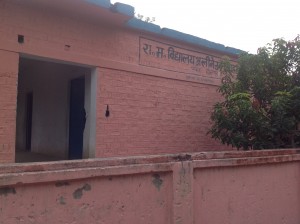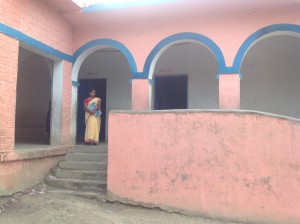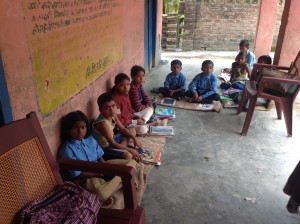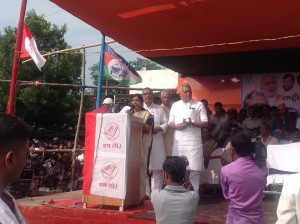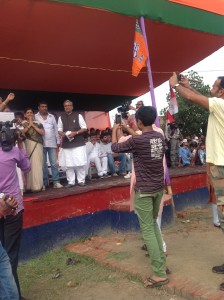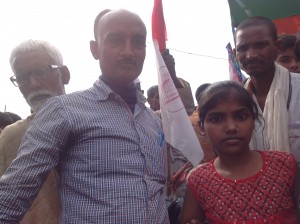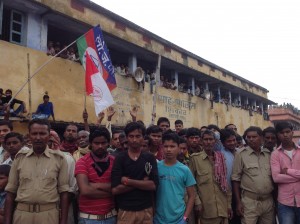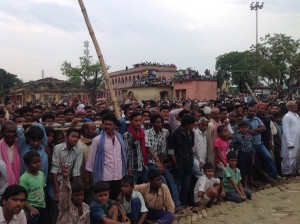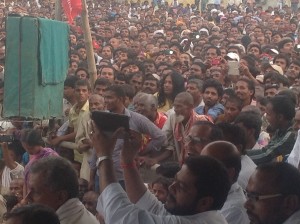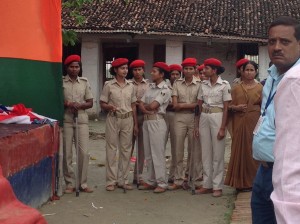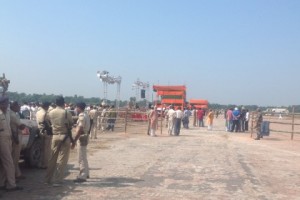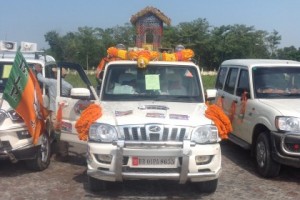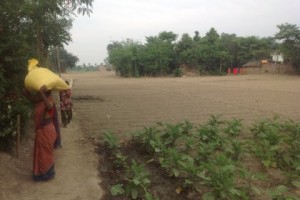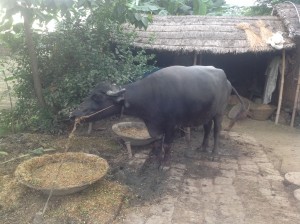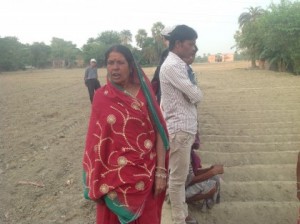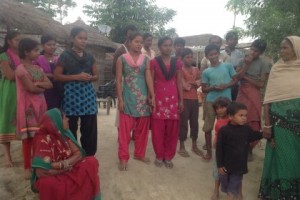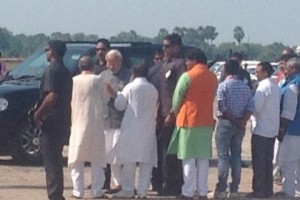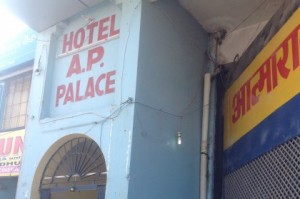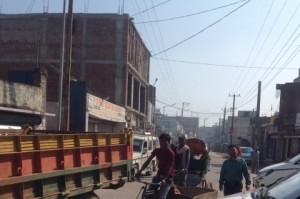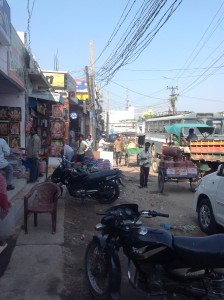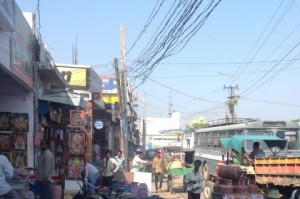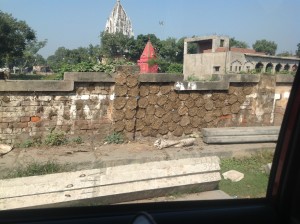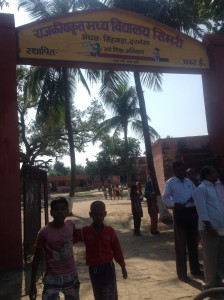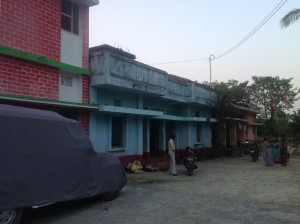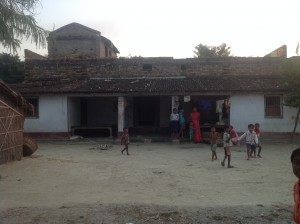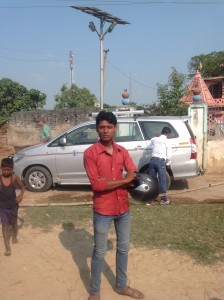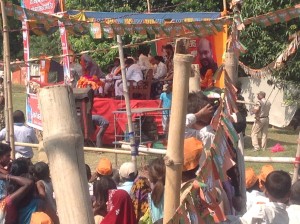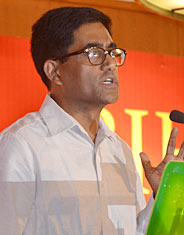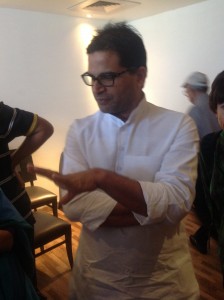Bihar is intense. With legislative elections in full swing, the state is in the heat of campaigning and showcasing itself. The country’s top politicians from PM Narendra Modi to the scrappy Mr. Asaduddin Owaisi and even the Shiv Sena from Maharashtra (contesting 148 seats) are touring the state, asking for votes and pushing their agendas.
Bihar is a state rising from abject poverty. This transformation is impressive and on full display especially in rural areas which comprise 90% of the state. Pucca roads and homes in villages have appeared, and they are clean, children are in school. The poverty reduction is evident, but conspicuously absent is industry. It is this next step that the BJP is aiming at, promising the jobs after the roti, kapda, makan, sadak, pani, bijli and shiksha have been delivered.
Is Bihar ready for this next step? Has it arrived at this inflexion point or does it need another 5 years of Nitish Kumar to get there?
There are 16 Rajya Sabha seats for the BJP riding on a win in Bihar, which will in turn help PM Modi achieve his national goals and promises made to India in 2014.
So all eyes are on Bihar. For the first time, not just the national media but also the regional media from the south and west of India are present.
Gateway House’s Manjeet Kripalani is on a five-day trip to North Bihar to observe the penultimate days of the election campaigning. She will send a daily diary, in pictures or words, while traversing Bihar, its progress and its aspirations. And why Bihar is so important to India.
- Lalu Prasad is much the same, irrepressible and full of the funnies, but with less punch and sting. Many years of power and money will do that. He is now trying to ensure that his two sons win a legislative seat, to continue the family business. He lives in the home that is now permanently assigned to Rabri Devi, his wife, as the former Bihar CM, a rule he had introduced.
- Lalu Prasad Yadav is in the fray because of Nitish Kumar, who has a strong support base in Bihar but not enough to race ahead of Modi. Lalu can provide that push.
The confident CM Nitish Kumar
- Nitish Kumar at the CM’s residence, receiving us.
- Nitish Kumar is confident, but can’t see beyond development to industrialisation. As Shekhar Gupta correctly says, Nitish is a povertarian. Modi offers something beyond that, which is why he has popularity.
Muzaffarpur
Muzaffarpur has political status in Bihar. The Muzaffarpur jail is named after freedom fighter Khudiram Bose, who was hung by the British. In 1971, after Sarvodaya workers were threatened by Naxalites, Jayaprakash Narayan moved to Musahari block in the city to work towards eliminating poverty and unemployment. George Fernandes won the Samata Party seat from Muzaffarpur in 1977 – a trade union leader with no caste calculations at all.
- Two and a half hours away from Patna is Muzaffarpur. The roads en route are both good and bad, old Bihar plus new Bihar. J.K. Residency, our hotel, is surprisingly good, in the middle of this nowhere town.
- Like much of the second and third tier cities here, everything at JK Residency is imported from China and set up in a jiffy, ensuring a certain lurid taste and basic quality, right down to the bathroom sink and bedroom ensemble. But it is liveable.
- Old and new Bihar again, as evidenced by the jhadoos being sold right outside. The shuttered doors of a state industry company is down the road. Everything in Bihar tips on patronage. It’s feudal. Muzaffarpur is where the JP movement started. It is also one of India’s 500 smart cities. Campaigning starts at 8 am sharp so we are on the road to see Nitish and Modi campaign in this critical 4th stage of the election.
- This is the hamlet of Ali Neora Brahmani Toli, Meenapur constituency, north Bihar. Life has vastly improved for the 350 who inhabit this Dalit basti. They cultivate maize, wheat, and also sell the coconuts that grow on the trees in the village. The village is clean, connected by pucca roads, and the school next door has been expanded to a middle school as well. Indrajit Rai, a handsome man with light eyes and a ready smile, says he admires Nitish Kumar for all this work done.
- At the Brahmani Toli School, where the 400 students got some days off school because the principal and teachers have been sent on election duty.
- Uma bai, who takes classes for the 7th and 8th classes, is left to mind the school and the handful of children in class.
- There is a shortage of teachers, she says, and she would like to see deeper investment in education capacity and expansion of schools.
- This is a dramatic change from the days of Lalu Yadav when Bihar’s education system was destroyed.
Sheohar
- At the rally at Sheohar for Ms Lovely Anand, candidate for the Hindustan Avam Morcha, the new party set up by Jitendra Manjhi, former chief minister of Bihar, estranged from Nitish Kumar and now part of the BJP.
- Sushil Kumar offered voters a foreign policy moment when he told the crowd, “If today China and Pakistan are afraid of one person, it is Narendra Modi.” He added later: “When Nitish Kumar went to Delhi, Arvind Kejriwal asked people to vote for him. Forget Kejriwal. Even if Mamata Banerjee comes, even if Barack Obama comes or Nawaz Sharif comes to tell you to vote for Nitish, nothing will stop the BJP from ruling Bihar.”
- Manoj Kumar Singh and his niece at the rally. He is a teacher of math for classes 1 – 8, with a son in the merchant navy. He commutes on a motorbike and says that though this crowd comprises of Manjhi supporters, the Maha Dalits, he believes the voter should move beyond caste to the state’s broader development.
- The crowd at the rally in Sheohar.
- The crowd at the rally.
Day 2
After many years, Bihar seems to be experiencing a new confidence. Ten years of Nitish Kumar’s development has made life better for most people – certainly safer, more educated and more positive. Better roads have meant more container traffickers – they are visible everywhere. What remains to be seen are tractors. In North Bihar, we saw maybe one tractor a day. More tractors in Bihar will be a sign of true independence.
There is still a long way to go for that day to arrive. The election so far looks like a close contest. Nitish Kumar is clean and admired, but people remember the dark days of Lalu Prasad Yadav’s reign, and worry that his presence in the coalition will compromise Nitish’s past achievements.
- The Lalu Prasad Yadav rally is a performance, complete with a warm-up musician.
- The women’s squad on election duty.
Day 3
- Preparing for Prime Minister Modi to arrive at the rally in Muzaffarpur, on an abandoned defence air strip. The bandobast is strict, complete with the presence of a young District Magistrate who holds her papers in her hand, ready to use in case of a law and order problem. It is a formality because, as the local superintendent of police informs us, the days of poll violence in Bihar are long gone, given the extreme vigilance of the media where any aberration immediately becomes ‘breaking news.’
- The campaign vehicle of Anil Kumar Sadhu, Son-in-law of Ram Vilas Paswan. Sadhu’s LJP has a tie-up with the BJP.
Bhishanpur
- This is village of Bhishenpur Jagdish (post Arthur), of 10,000 people.
- Their lives have improved vastly under Nitish Kumar in general – the local school has expanded into middle school, and they have electricity. But the roads were so bad, that people were afraid to come to the village. And there were rivers on either side, through which the villagers would have to wade in order to take their produce to the market. Else they would take the long road to Muzaffarpur, which was 35 km.For 20 years, they asked Ramai Ram, the local representative (of the JDU) for a bridge that would help shorten the long distance to 14 km. But nothing came. Finally last year, the women fasted for several days, and eventually immersed themselves in the cold water for 36 hours and threatened to commit ‘sammadhi.’The drama over the incident attracted the local government which has now begun the work of building two bridges on either side of Bhishenpur Jagdish village.
- Titri Devi, 60, was among the women activists of the village. She is vocal and angry – the anger, she says, still does not leave her. The village will not vote for the JDU again, she says. Instead they will vote for Baby Kumari, a former BJP worker now an independent candidate. Baby is a woman, she lives in a nearby village, and understands their concerns better.
- But these three grand daughters of Titri Devi, all below 18, have made up their mind about who they would vote for if they could: Narendra Modi, who, they say, will work for their welfare.
- The Prime Minister arrives at the dot of 12.30 pm, neatly attired as usual, and greets the small group of BJP cadres awaiting him. The heat is scorching. The PM starts by invoking the political success of trade union leader George Fernandes, saying Muzaffarpur has been blessed by Fernandes’ presence, and salutes him. Then he gets down to business: winning over the crowd. These elections, he says, are like an open university, where public education takes place. Anyone can be in this university, he says, and those in power should give the public a report card of their attendance and performance.
This election has taken election slogans to a new level. From roti-kapada-makan, to bijli-sadak-pani, to shiksha-vigyan-vikas, and now, in this election, padhaee-kamaee-davaee (higher education, employment, health). This Modi emphasises, stepping into the space beyond the development and education success of the Nitish Kumar government, to opportunity for the small entrepreneur like the tea-stall owner, newspaper vendor, who are the backbone of India’s services economy, and the BJP vote.
Although the Congress Party leaders are largely absent in Bihar, the frequent references to the Congress by the BJP leaders in these elections – even PM Modi – ensures the Congress a presence in every public debate and discussion.
Day 4
We are in Darbhanga, the home of the great lineage of Darbhanga maharajas, who were among the richest landlords in India, and were both visionary and philanthropic.
The palace is now a college, so we make do with the alternate best available palace – the A.P. Palace. Everyone stays here, including the politicians during their campaigns, and the marketing managers and salesmen for the white goods that are now increasingly visible in Bihar.
The railroad used to go all the way to the door of the Palace, say local experts. The Darbhangas even had their own airport and airline – Darbhanga Aviation, with four planes, mostly Dakotas. One was given to the Indian Air Force during the India-China war.
The existing infrastructure of Darbhanga was built by the royals, and since the death of the last Maharaja Kameshwar Singh, nothing further has been developed.
- The best hotel in Darbhanga
- To see Darbhanga today, one can hardly envision the City of Ponds, the Gateway to Bengal (Dwar-Banga) of the Maharajas. Like any neglected small town in India, Darbhanga is full of illegal criss-crossing wires, poor sanitation, construction, and an absolute, resolute lack of beauty. When asked about improving the condition, Sajay Saraogi, the three-times elected BJP representative for Darbhanga says that there is no municipal corporation to take care of city services; it is the state’s job…and so the neglect continues.
- The way Darbhanga looks now.
- The way Darbhanga looks now.
- Darbhanga today.
- In the village of Anchal Singhwada, in Darbhanga district, Lalu’s RJD and Modi’s BJP are in a ‘takkar.’ There is a large Muslim population, with goats roaming the streets.
Mohammad Walid Nadaf is 30, and works as a driver in Saudi Arabia. He has also worked in Nepal and Bangladesh, but never, he says has he seen worse conditions than his own village. He doesn’t want to leave it, but has to earn money. There are no jobs, electricity is stolen or too expensive to install by a private player, it costs lakhs to get a job – how absurd is that, he asks. The boys in this village have lost their mind and their confidence.
There are sugar mills in the area, set up years ago by the Maharaja of Darbhanga, why can’t they be revived to help the people?
It is too hard to explain modern economics to the distressed young man – that markets, labour and capital are now all global, and the sugar mills of Darbhanga cannot be revived because the global economics of sugar don’t allow it.
But the Nitish Kumar government is skittish about acquiring land for industry; it’s too political, the land is too fertile. And after all, Nitish Kumar is a socialist, the old Lohia-ites who don’t believe in business and industry and hence will not encourage the transfer of land from the poor farmer to the ‘rich’ industrialist.
So Mohammad will have to wait till the new dawn comes and perhaps this election will bring it to his home.
Bijli
- Pucca Ghar
- Kachcha Ghar.
- Krishna Kumar Yadav, 30, works with his older brother in a shoe factory outside of Delhi. He says he will vote for development, and that means Nitish Kumar. He has not heard of the Dadri incident that has so polarized the Bihar election campaign, or have an opinion about whether the PM should have commented on it. He does believe, however, that the Prime Minister’s singular job is to keep India clean.
- Amit Shah has been in Bihar for the last two months, planning and strategising the BJP’s campaign. He himself has been on the stump, speaking on behalf of the BJP. He sounds like Narendra Modi lite, down to the PM’s greeting of “Mitron!” But Shah is not quite the real thing, nor much of himself either. Consequently, he is not a crowd-puller. He understands that but he says his job is to keep hammering home the message, till election day. Those are mostly about reservations, the davai-padhai-kamai script, and the central package that a BJP win in Bihar will bring.
- The officer behind Bihar’s success is Pratyaya Amrit, who is currently the Chairman and Managing Director of the Bihar State Power Holding Company.Amrit is one of the few officers who Nitish Kumar surrounds himself, and works intensely with.There is a reason why. After working on cleaning up the state’s finances and getting a majority of the roads built, Amrit has for the last 18 months turned his attention to the electrification of Bihar. The state is already 45% electrified, and he wants to accelerate that process for complete electrification. It can be the factor that wins the election for Nitish Kumar, says a fellow traveler. If that happens, Bihar will be a model not just for India, but for many parts of the world which are struggling with getting power and a loyal cadre of government officers who can provide it for them… and thereby, progress.
- Meet Prashant Kishor, the chief strategist/campaign manager for Nitish Kumar and his Maha Gathbandhan. Kishor was best known for being one of the chief planners of Narendra Modi’s Prime Ministeral win in 2014. This year, he has moved to Nitish Kumar – a professional service for election campagining and strategy he offers through his Citizens for Accountable Governance. Kishor is intelligent and politically canny, a healthcare expert with 10 years of UN experience on the subject. He has 300 people on the ground in Bihar, rolling out the strategy. This is quite different from the usual party cadres on whom candidates rely; loyal and often effective, but not always professional. Kishor brings in professional election experts to be the backbone of the campaign. If he succeeds in promoting Nitish Kumar’s win the way he did PM Modi’s last year, then it will change Indian elections forever. A new, more organized style of campaigning will take the lead, marking this election as the beginning of the Americanization of India’s election politics.
Manjeet Kripalani is co-founder and Executive Director, Gateway House: Indian Council on Global Relations.
This blog was exclusively written for Gateway House: Indian Council on Global Relations. You can read more exclusive content here.
For interview requests with the author, or for permission to republish, please contact outreach@gatewayhouse.
© Copyright 2015 Gateway House: Indian Council on Global Relations. All rights reserved. Any unauthorized copying or reproduction is strictly prohibited.


